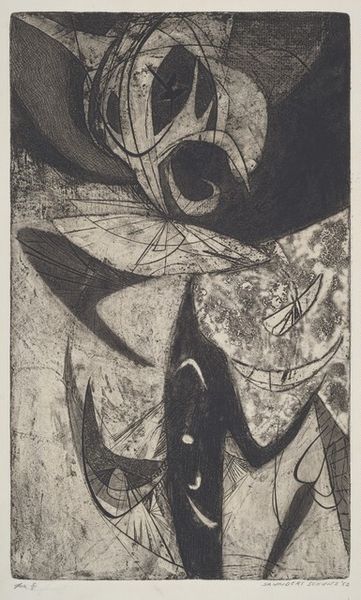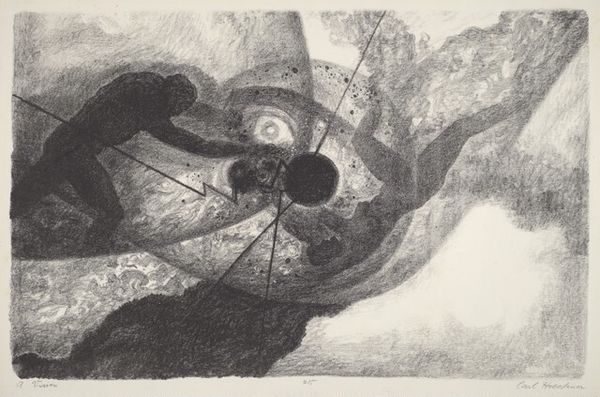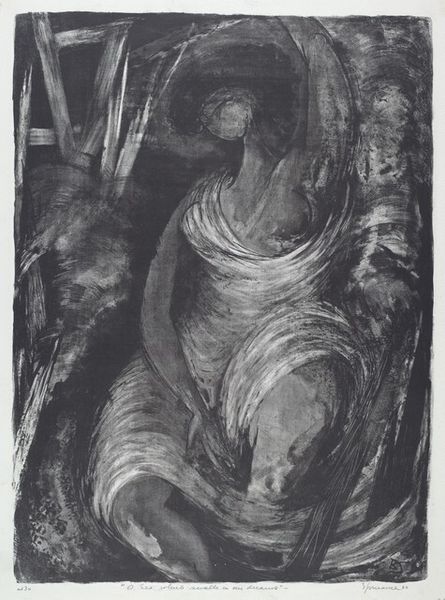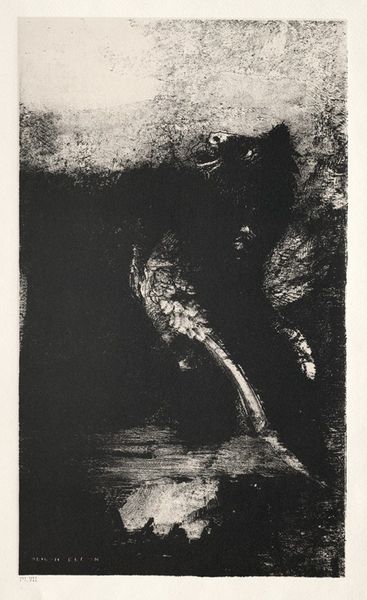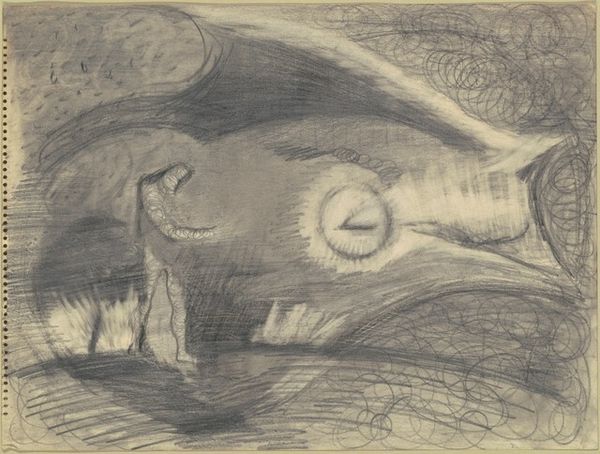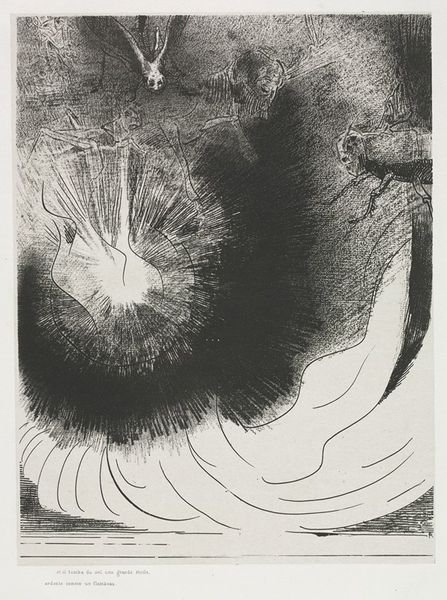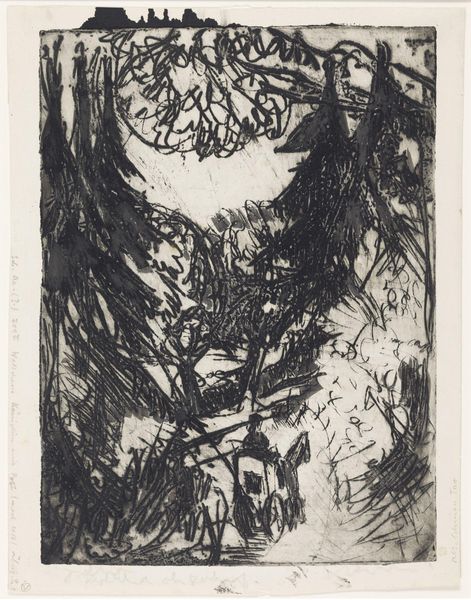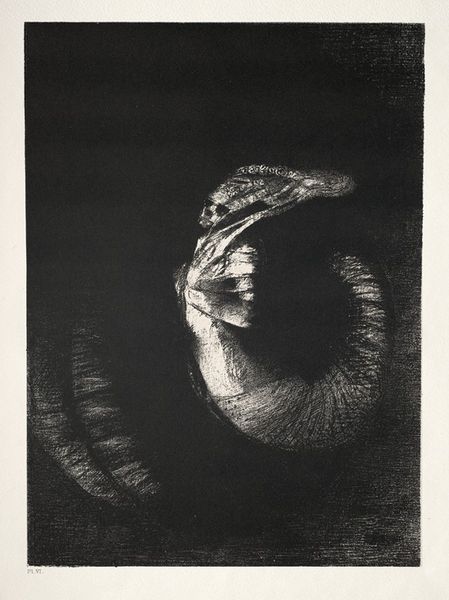
print, etching, intaglio, graphite
#
pencil drawn
# print
#
etching
#
intaglio
#
pencil sketch
#
figuration
#
pencil drawing
#
geometric
#
abstraction
#
line
#
graphite
#
history-painting
Dimensions: image: 40.7 x 29 cm (16 x 11 7/16 in.) sheet: 53.7 x 38.7 cm (21 1/8 x 15 1/4 in.)
Copyright: National Gallery of Art: CC0 1.0
Curator: This is Pavel Nesleha's 1970 etching, "Strázce," which translates to "The Guard." Editor: My first impression is ominous, a little haunting. The contrast is stark, the linework intricate. It's both abstract and clearly representational, making for an unsettling combination. Curator: The etching medium really emphasizes those sharp contrasts. I’m drawn to the interplay of symbolic images – that guardian figure and the spiraling geometric shape above it. They almost seem to represent conflicting forces. Editor: The labor-intensive process of etching on metal plates… think about the sheer physical act of incising that level of detail. The artist’s hand, forced into such controlled aggression. Is that part of the "guard’s" power – this relentless process imprinted on the very material itself? Curator: That's fascinating. Given the cultural context, the “guard” figure takes on multiple layers. It echoes classical sculpture, specifically the Capitoline Wolf, nursing Romulus and Remus, the founders of Rome. That's powerful imagery for cultural identity and authority, and it could mean many different things under the context of 1970. Editor: So, this potent historical symbol, then replicated and multiplied through the printing process. What happens to its authority as its mass-produced, disseminated? Does it retain that power, or does it become diluted, commodified? Curator: Good question. It prompts us to consider how such imagery might have been viewed under the former Czechoslovak regime. Perhaps the "guard" takes on a more ironic or critical meaning. Are they guarding the people or guarding against them? Editor: Right. Or what is this artist “guarding” against, if the wolf-like guardian also relates to self-preservation within the communist artworld? That level of uncertainty is conveyed perfectly with etching as it captures a sense of meticulous construction and underlying instability. Curator: A print is inherently reproducible. I wonder, does Nesleha leverage this fact to convey authority or to challenge ideas about original authorship? Editor: An endless, slightly distorted repetition, just like the circles echoing above... I leave here thinking that "Strázce" gives a sense of permanence and power through an understanding of ephemerality.
Comments
No comments
Be the first to comment and join the conversation on the ultimate creative platform.
